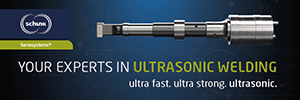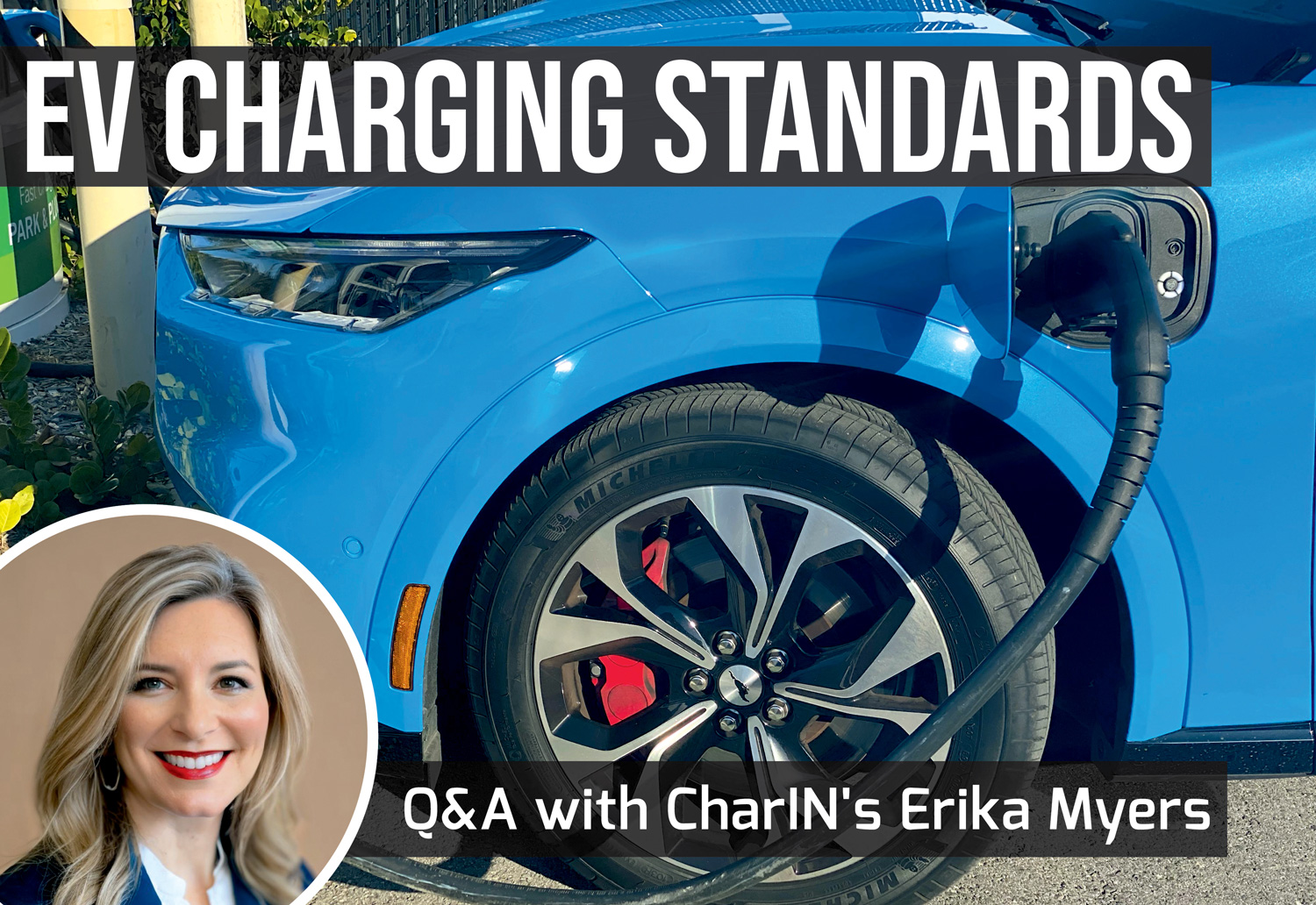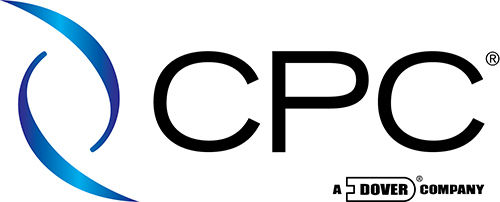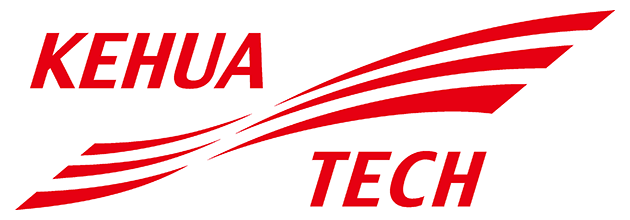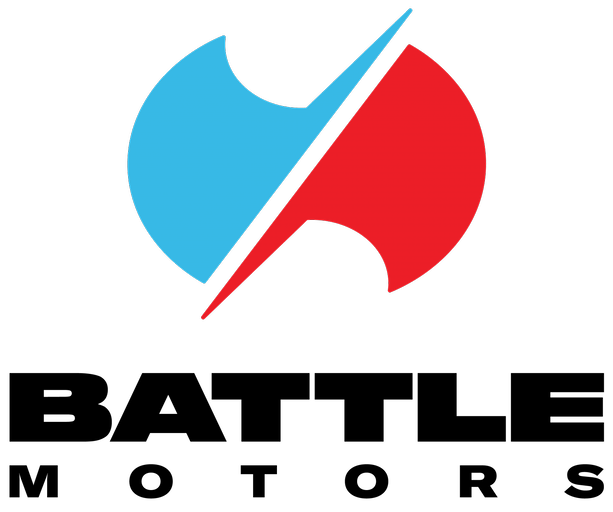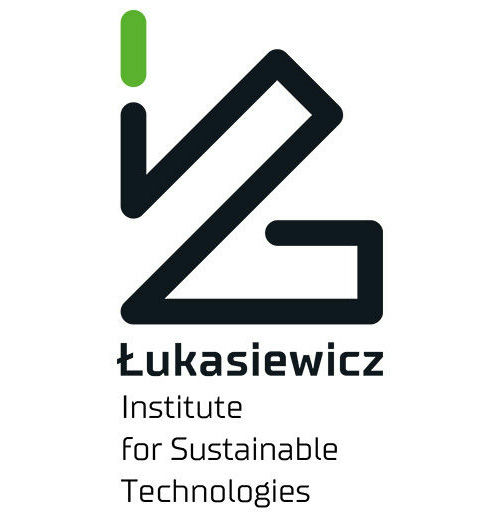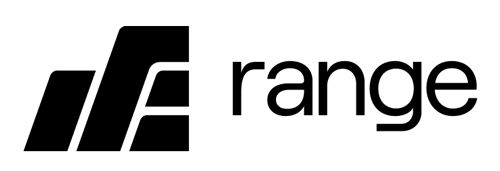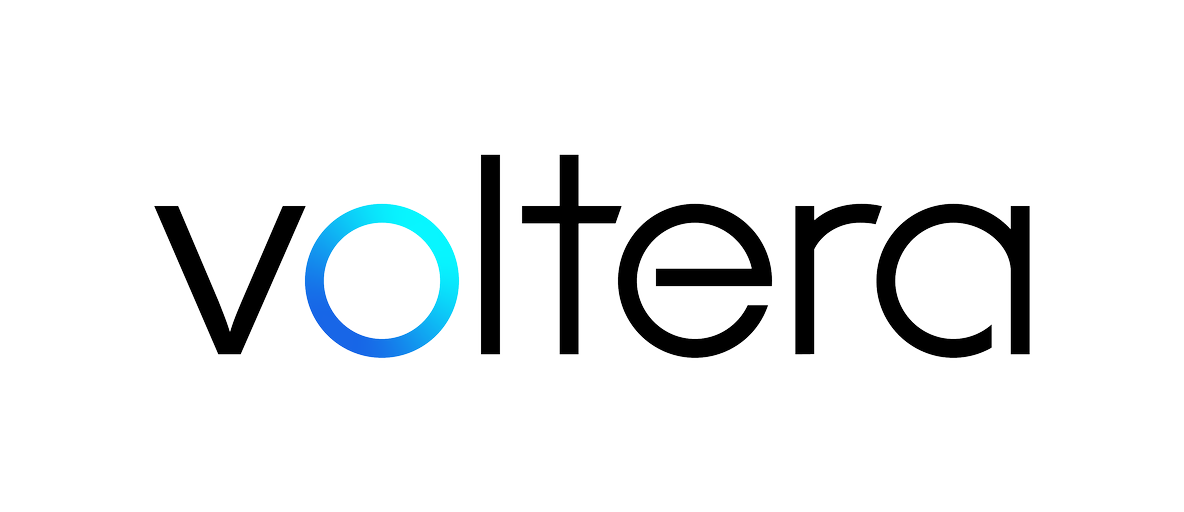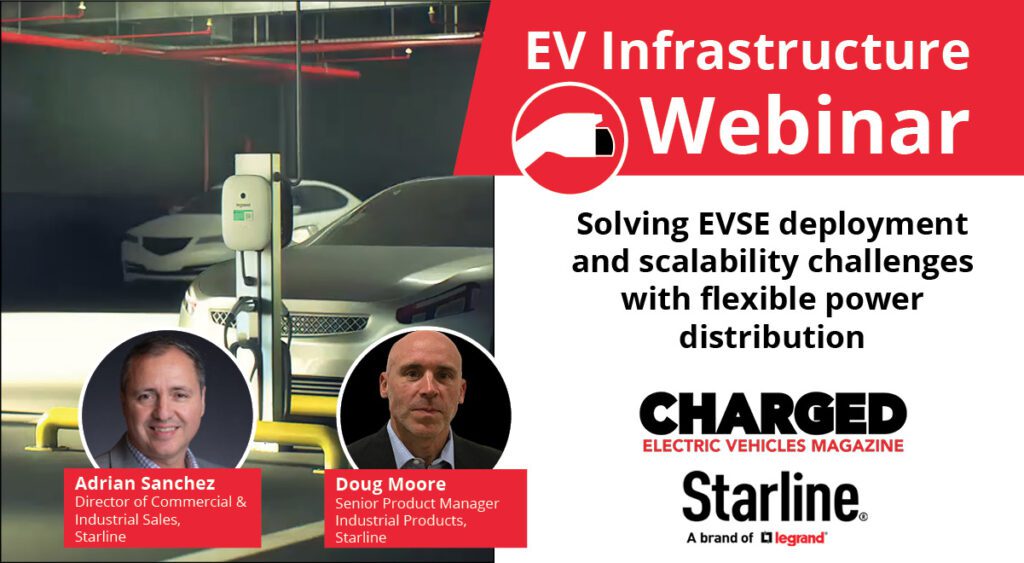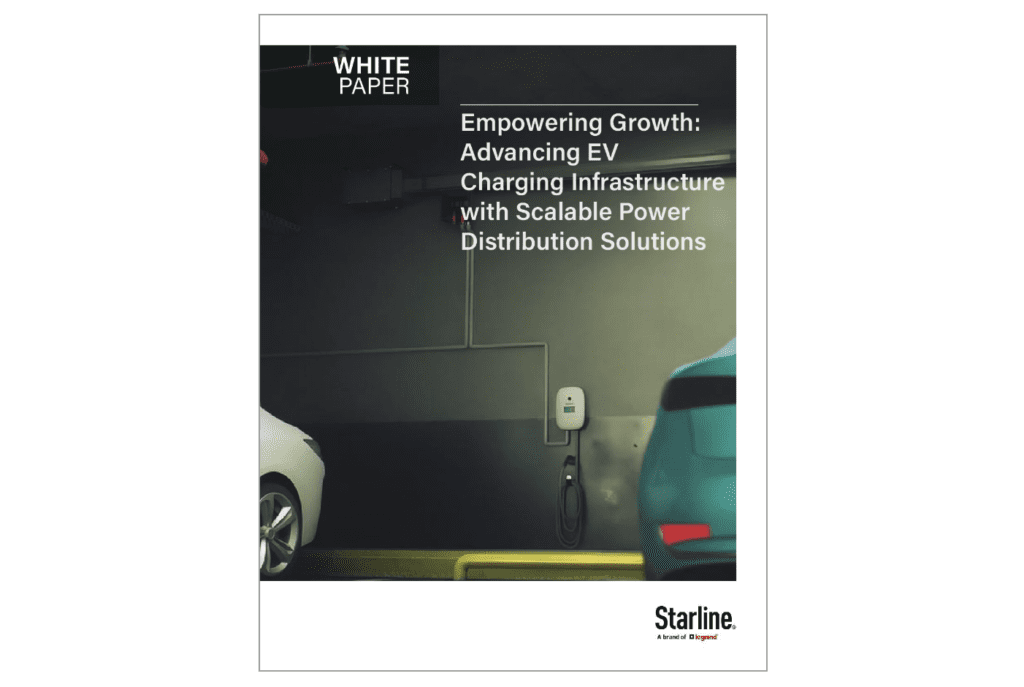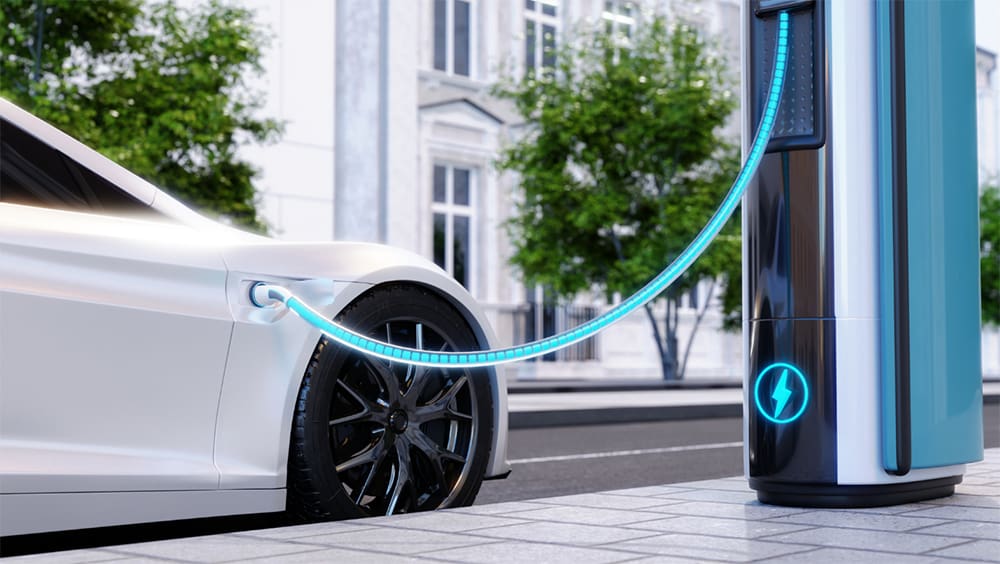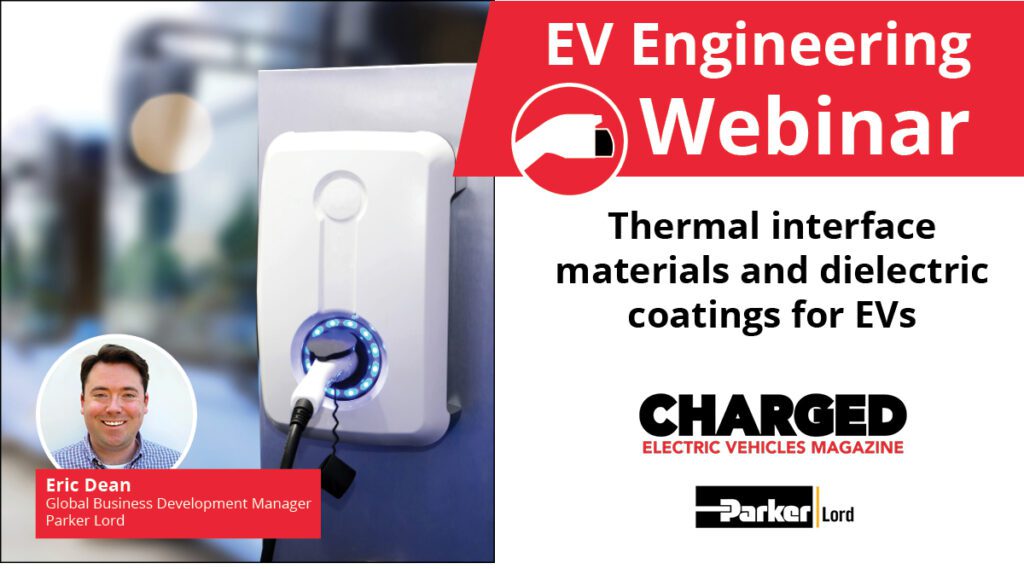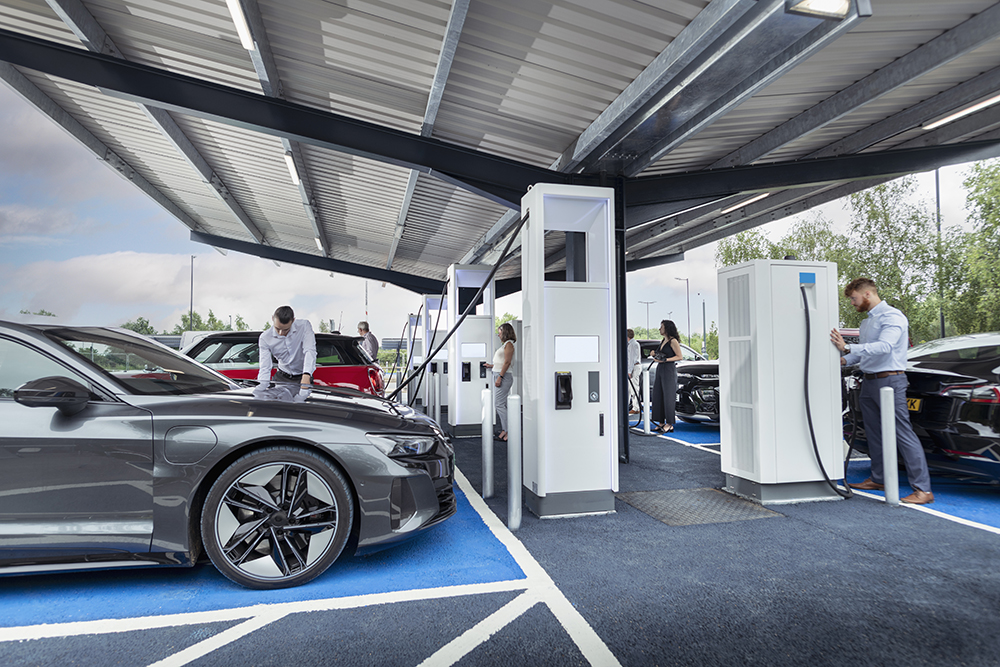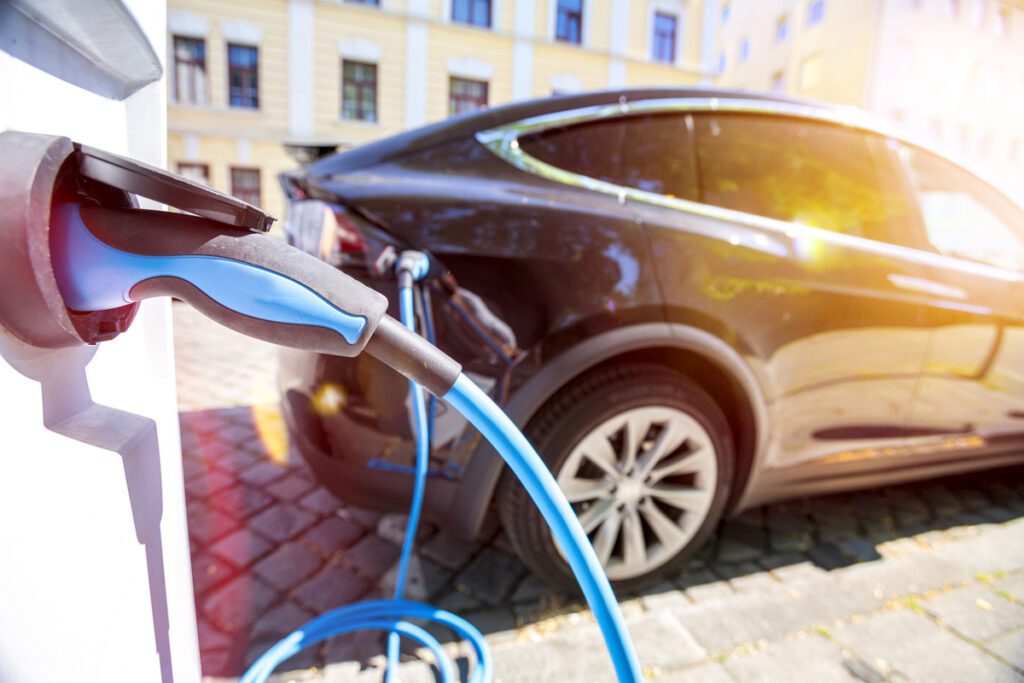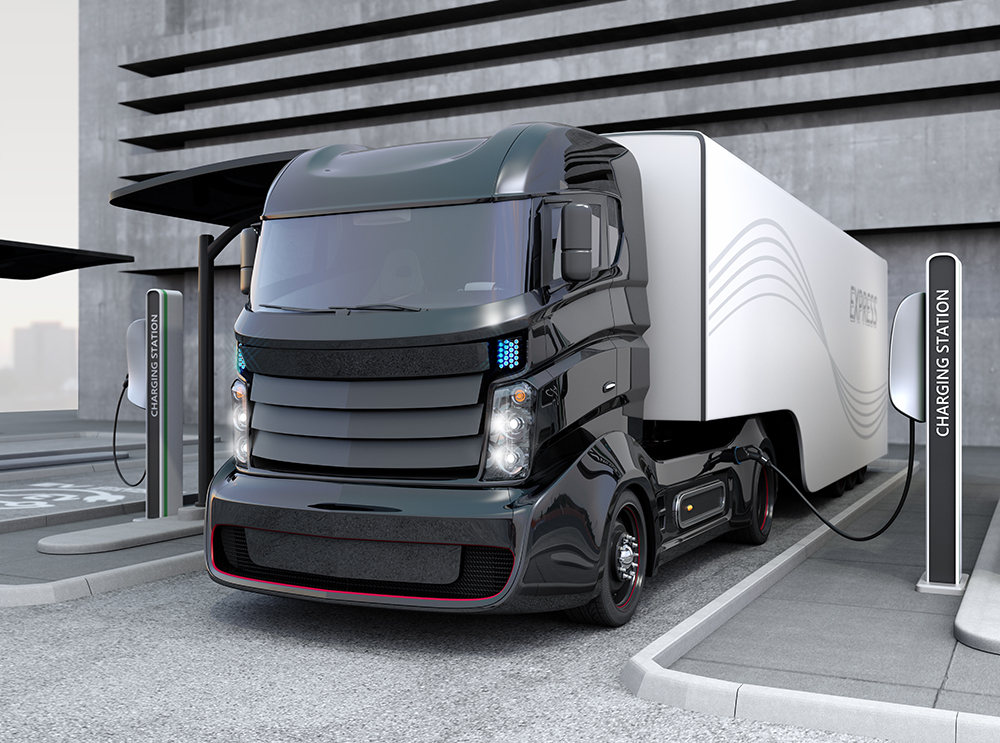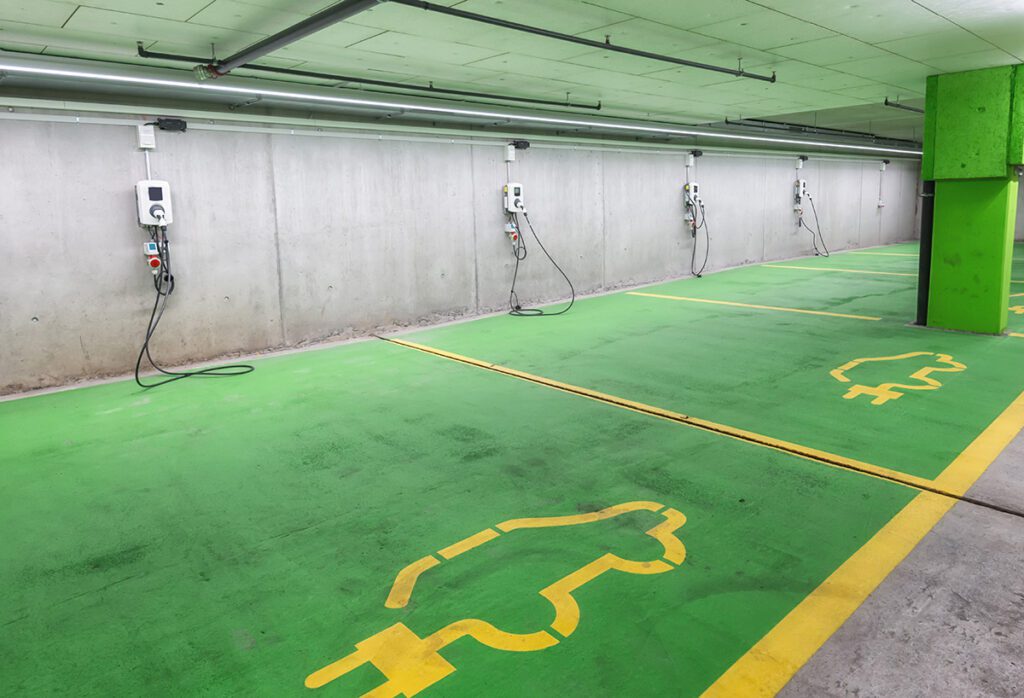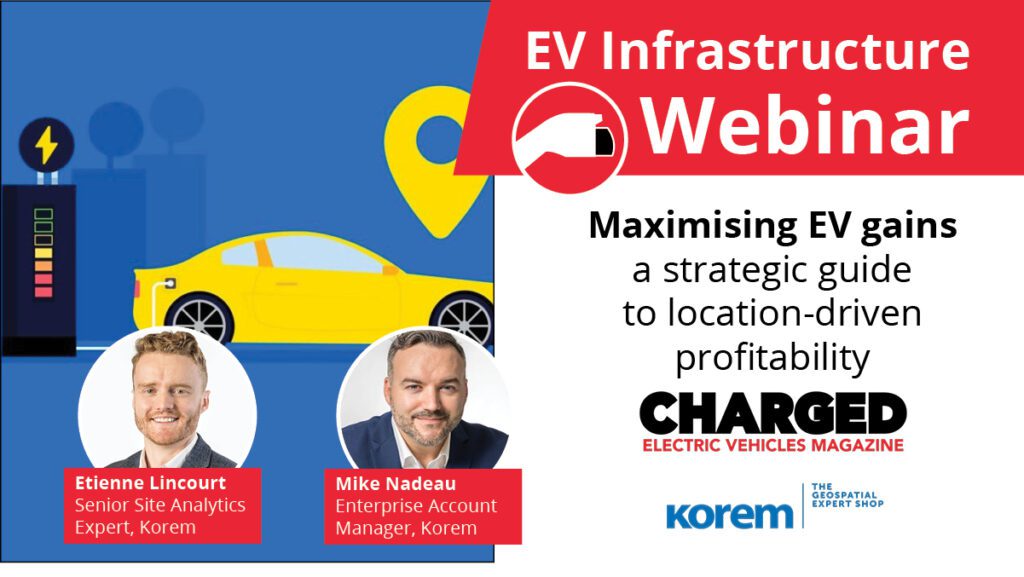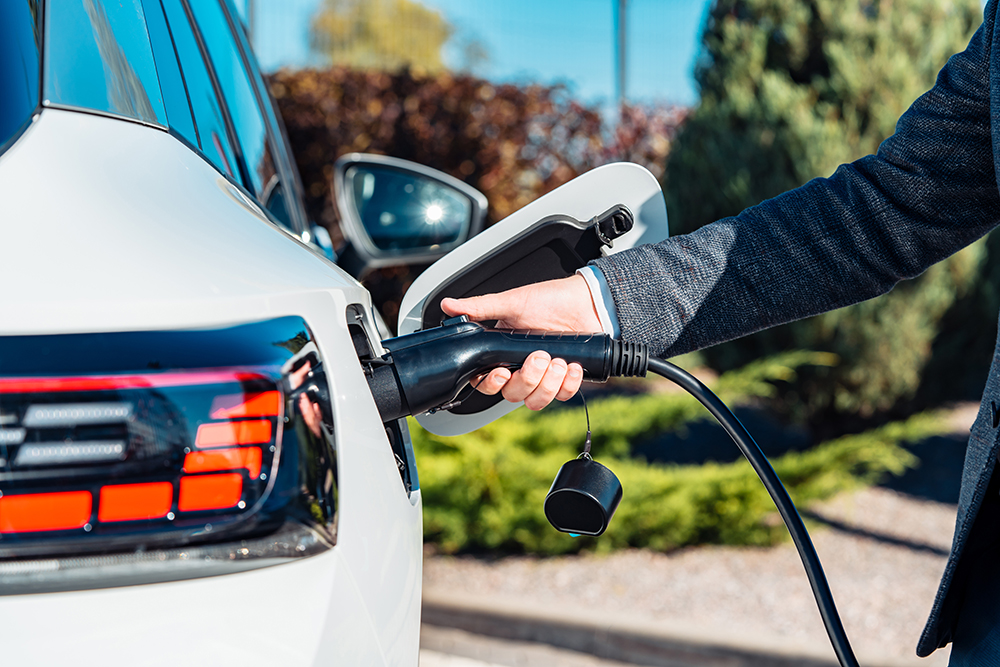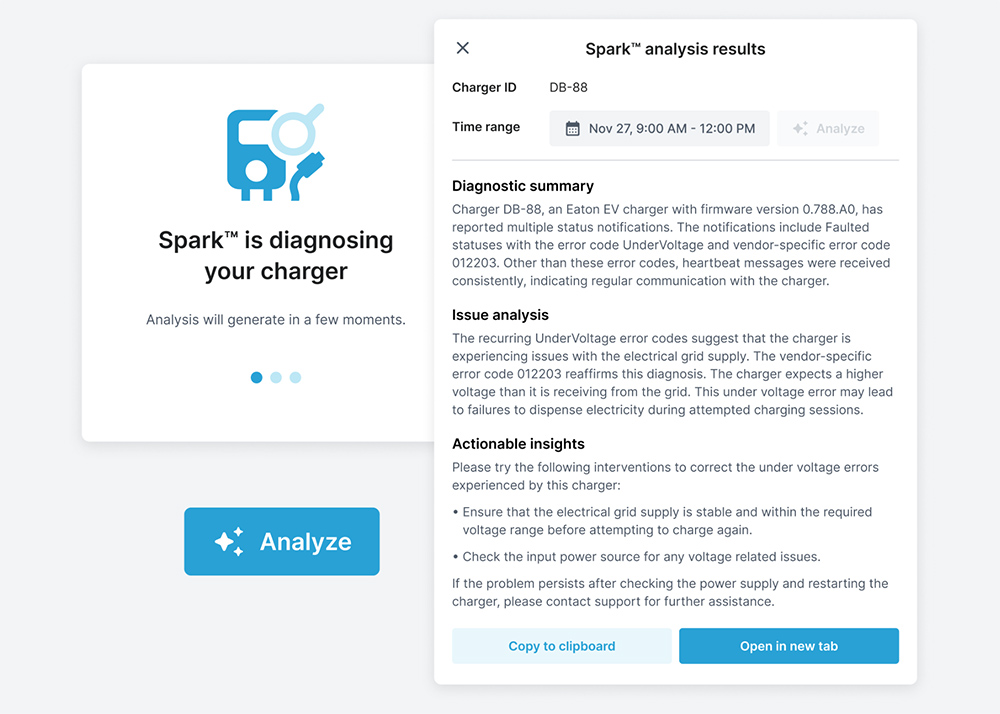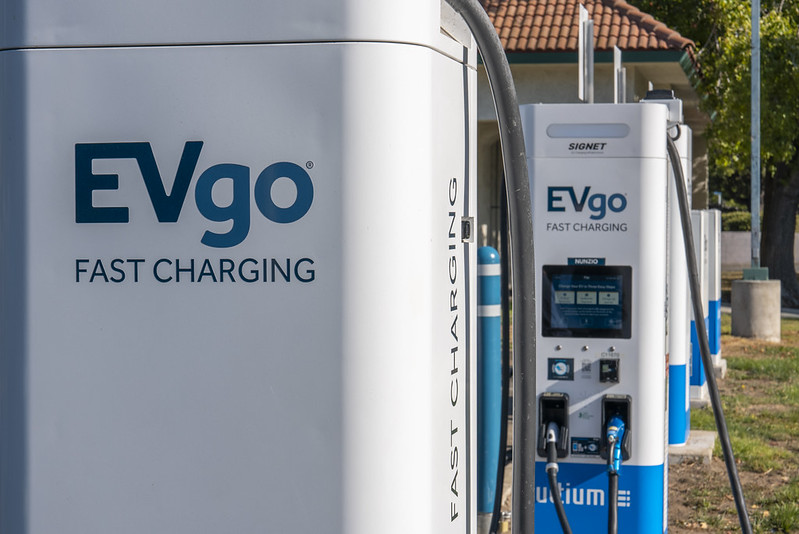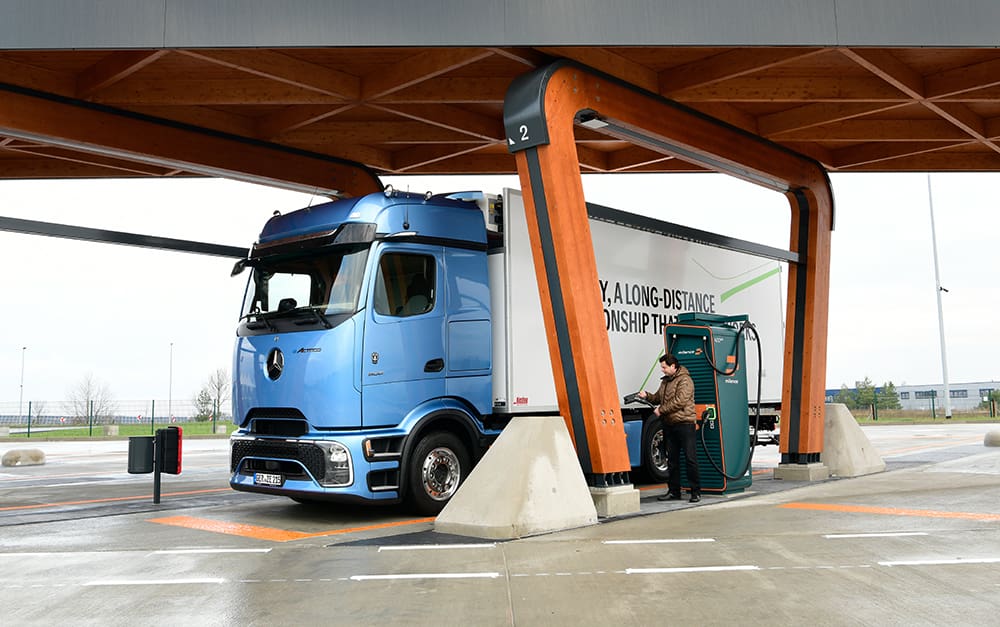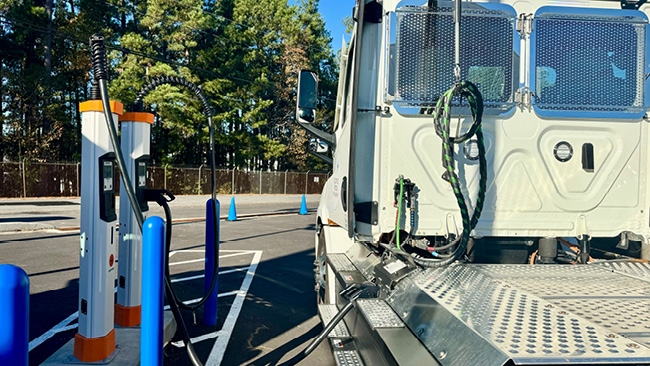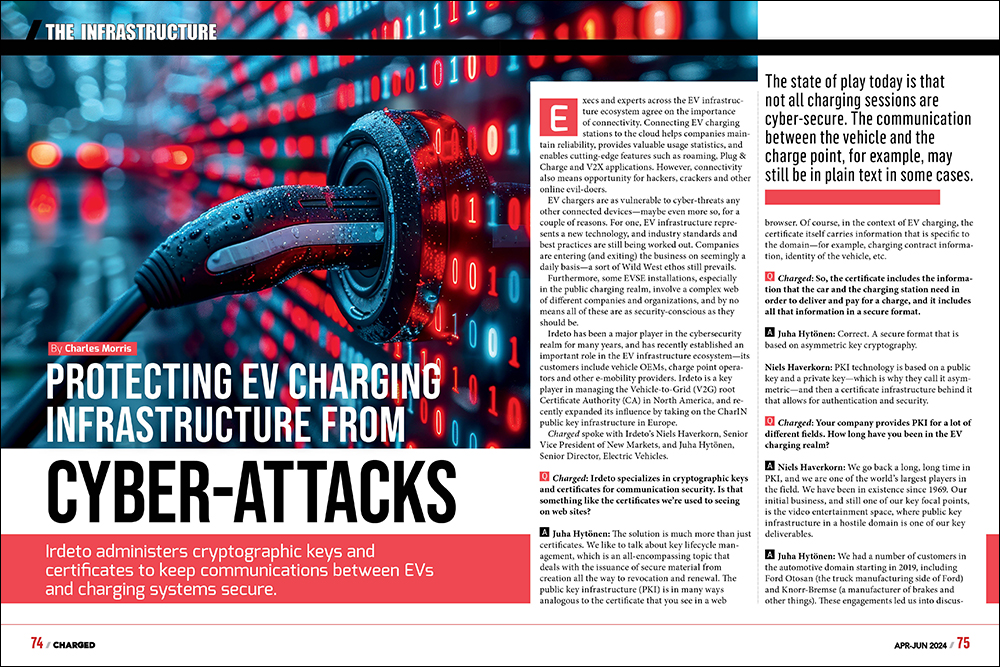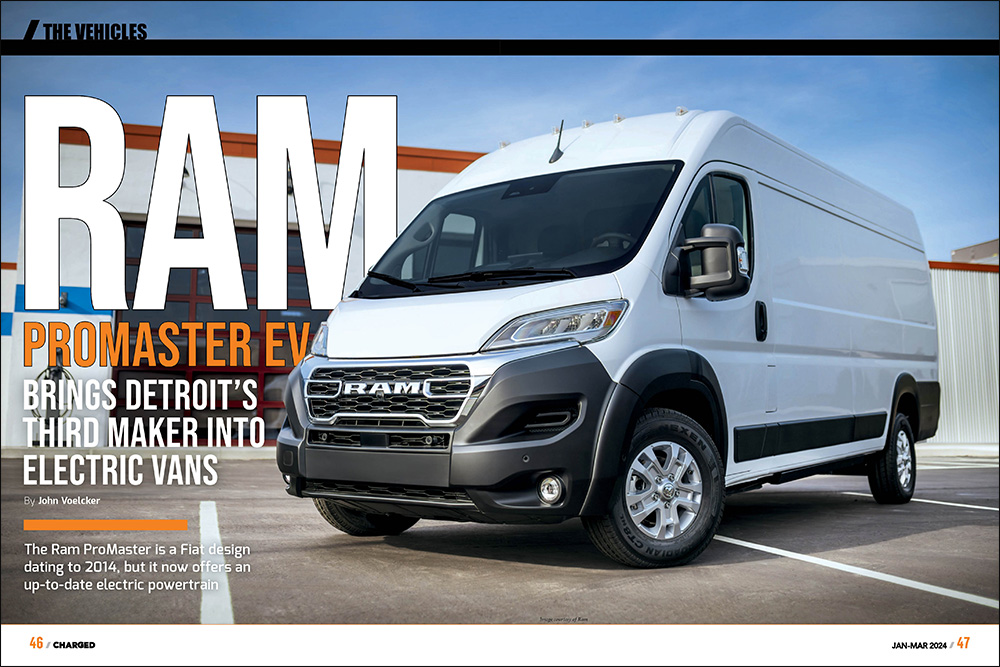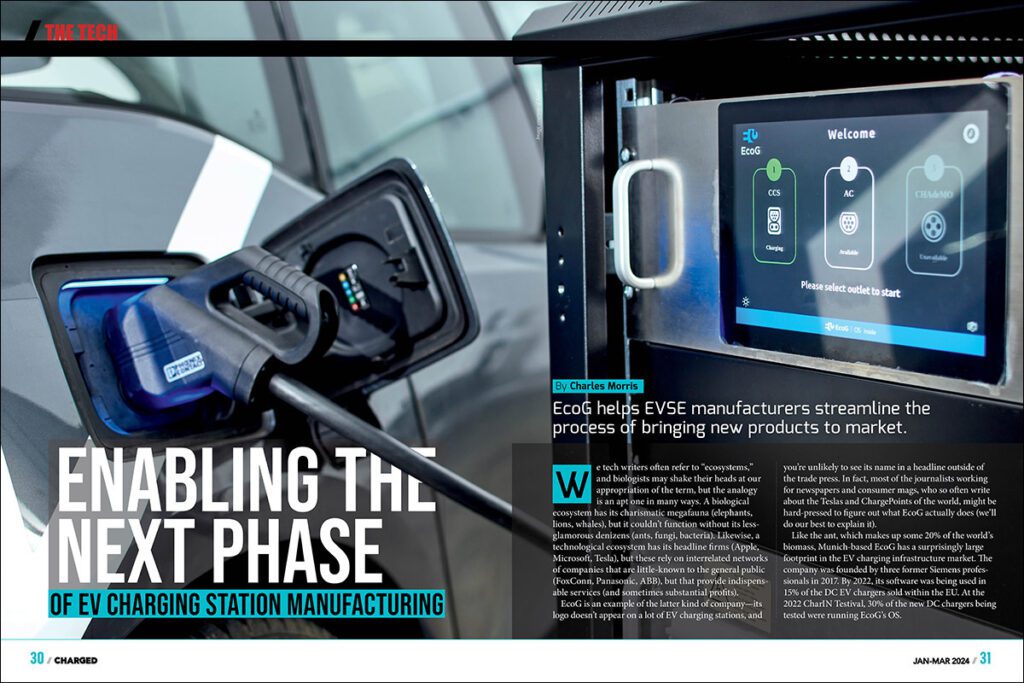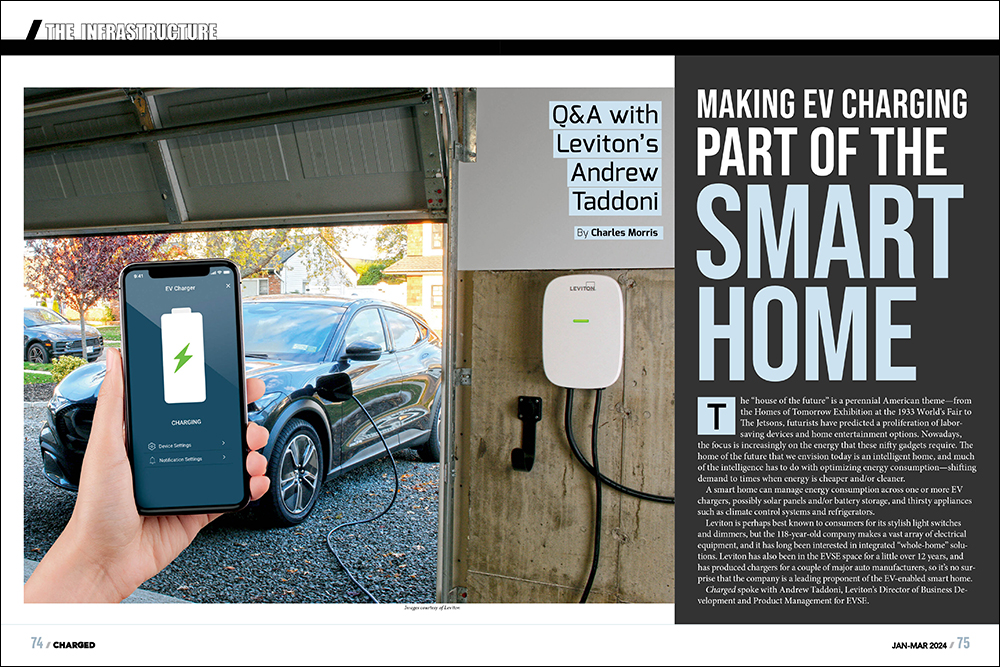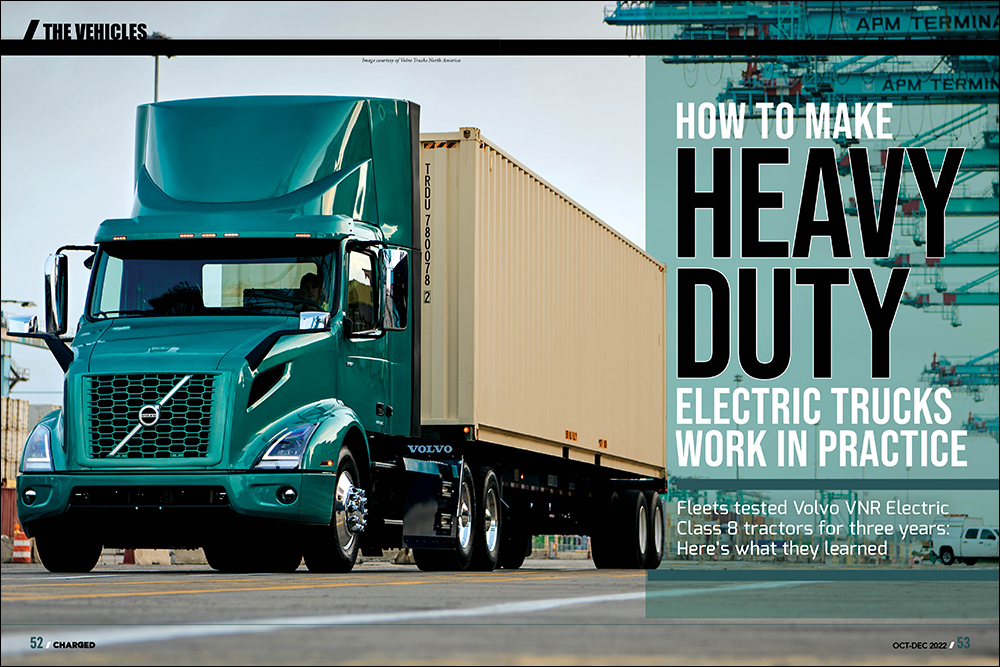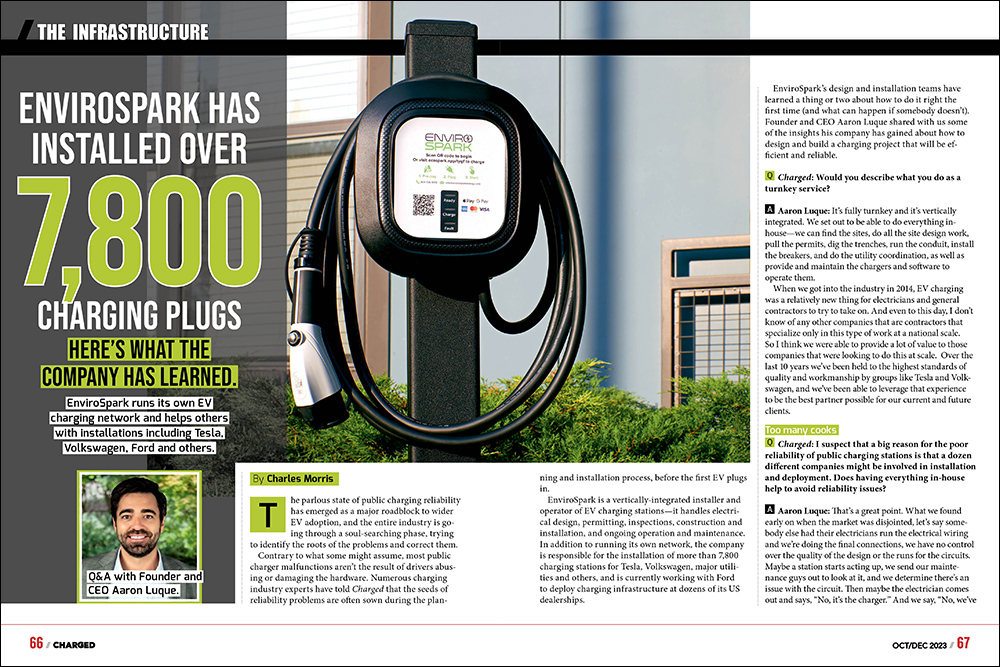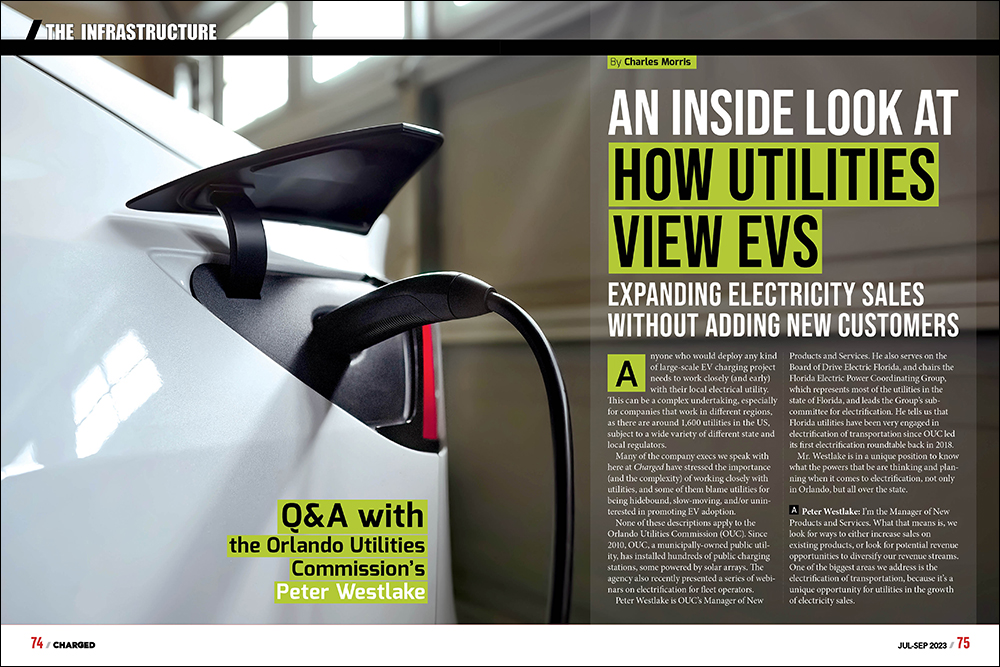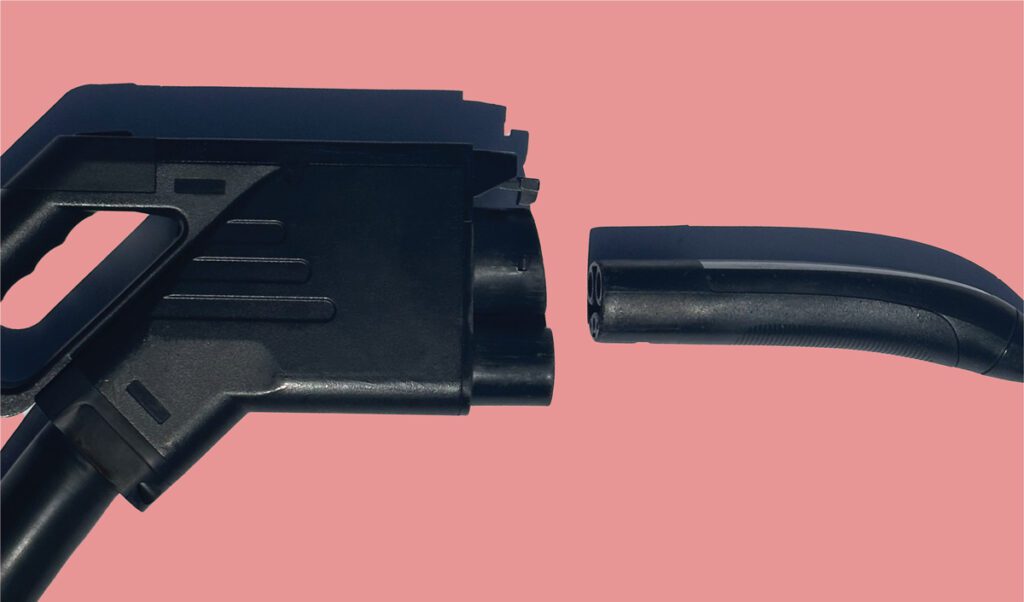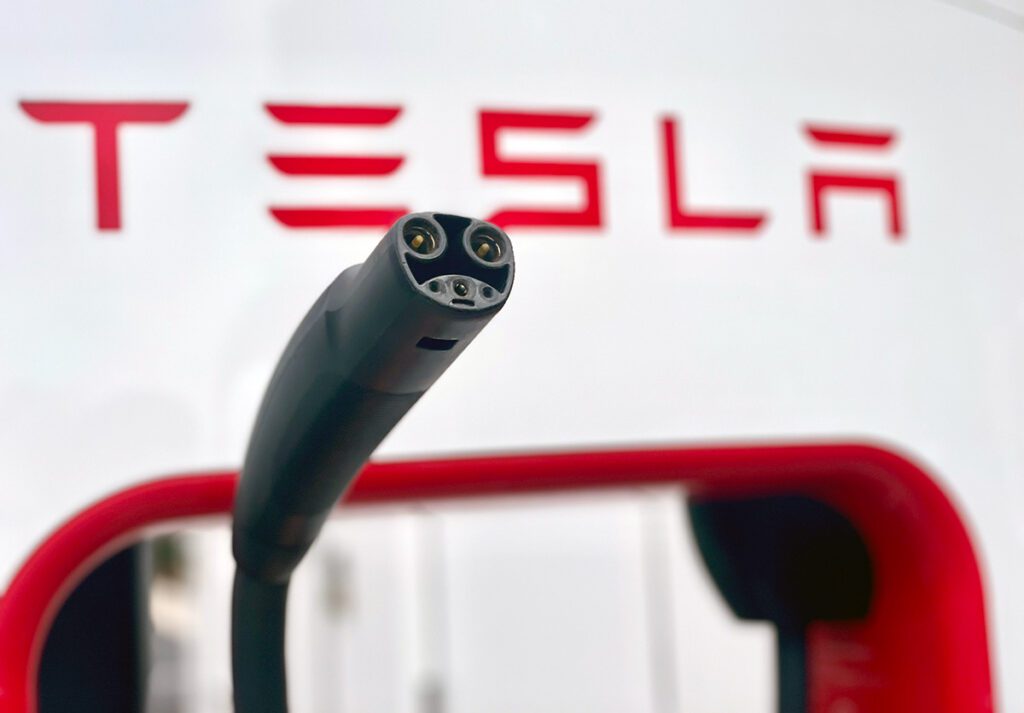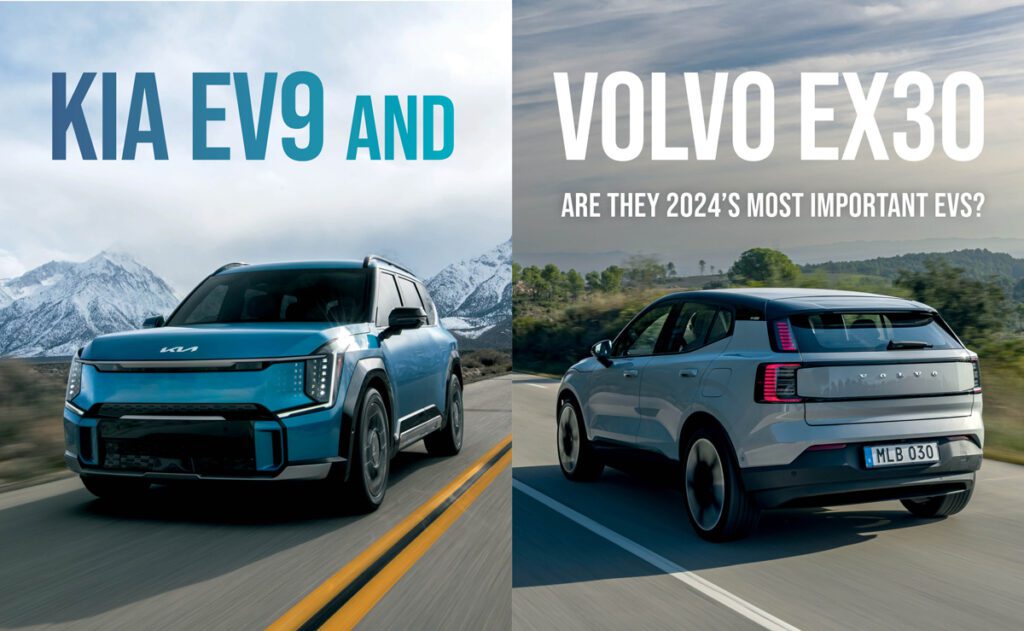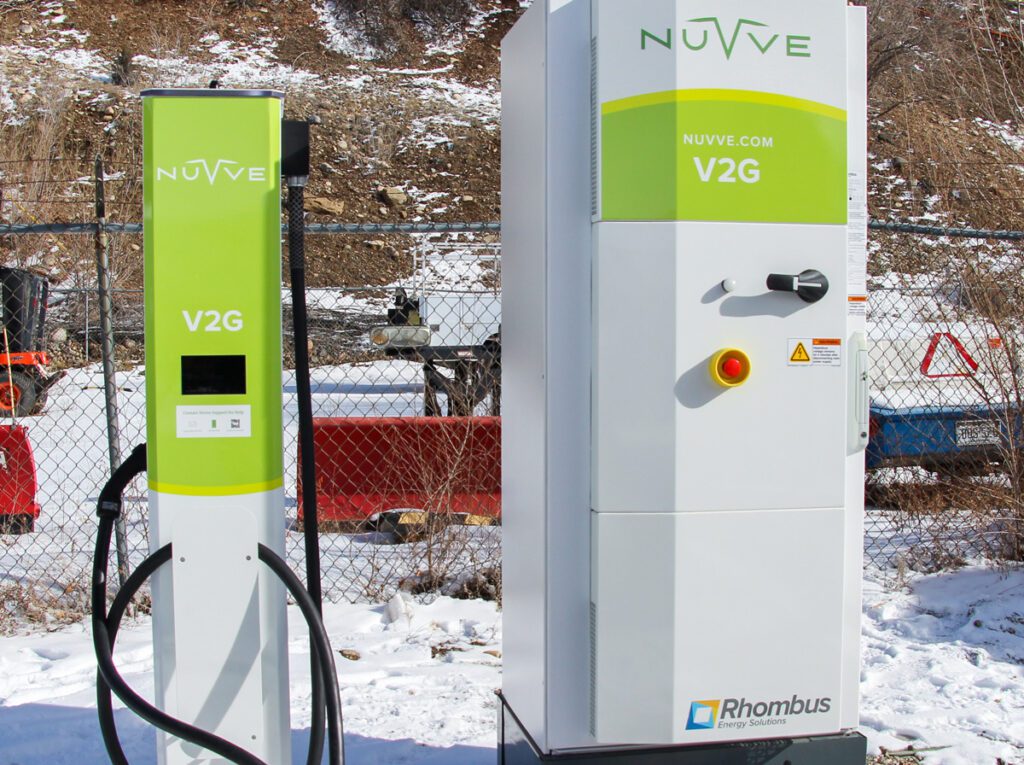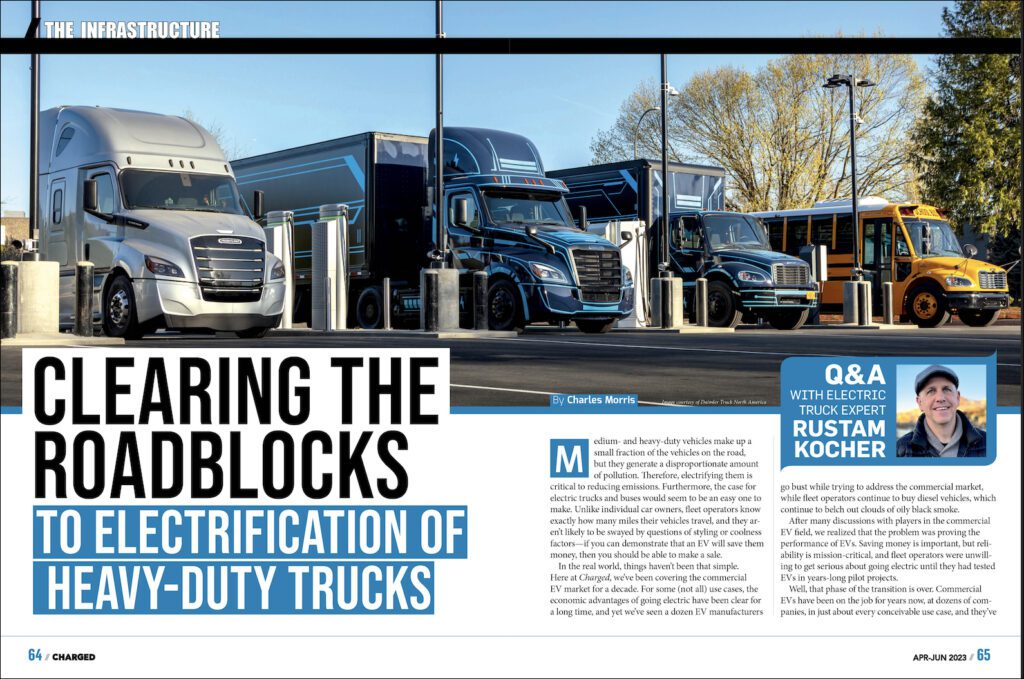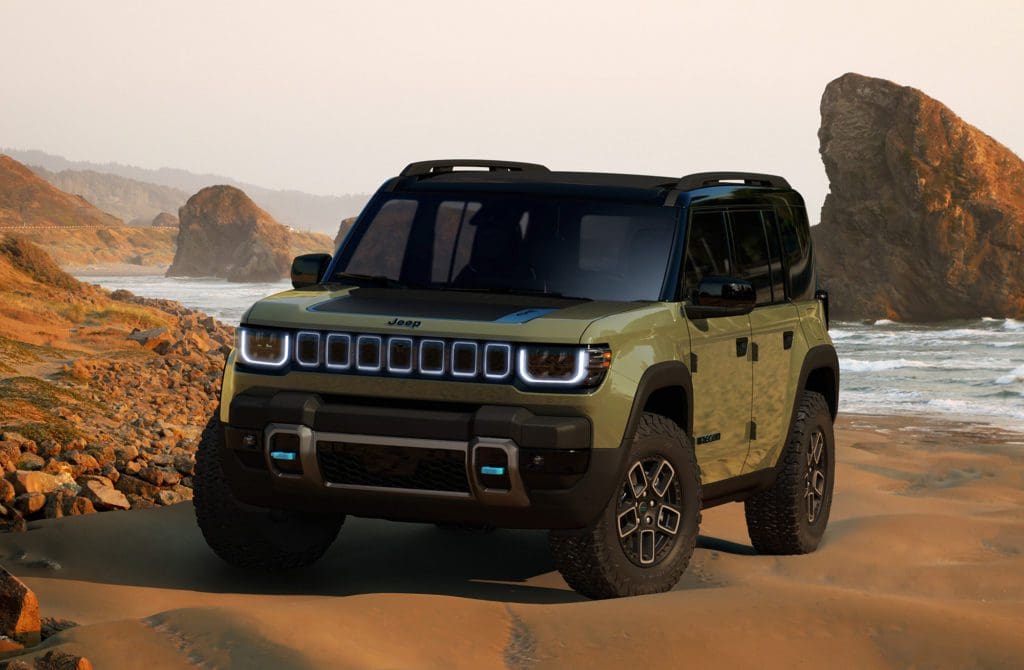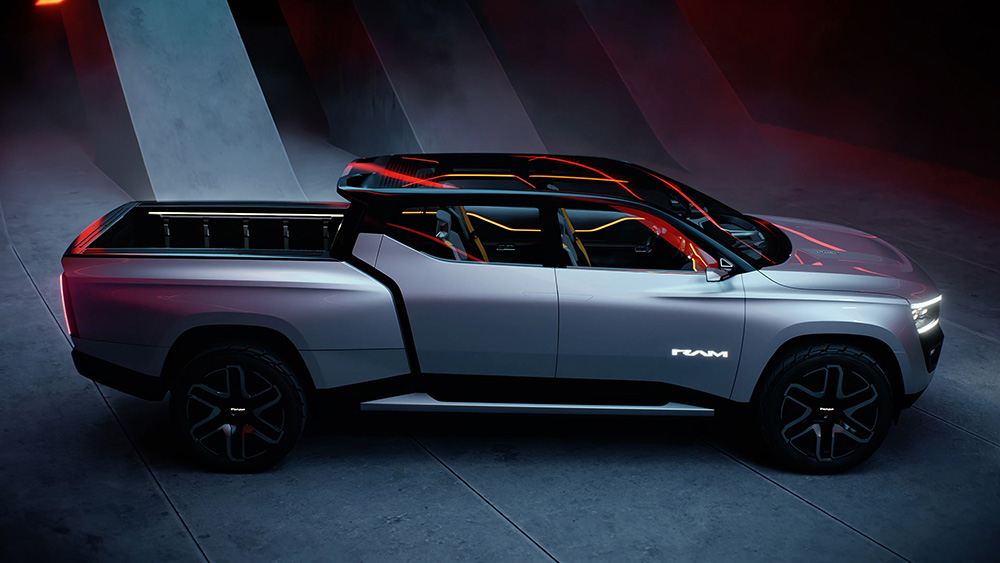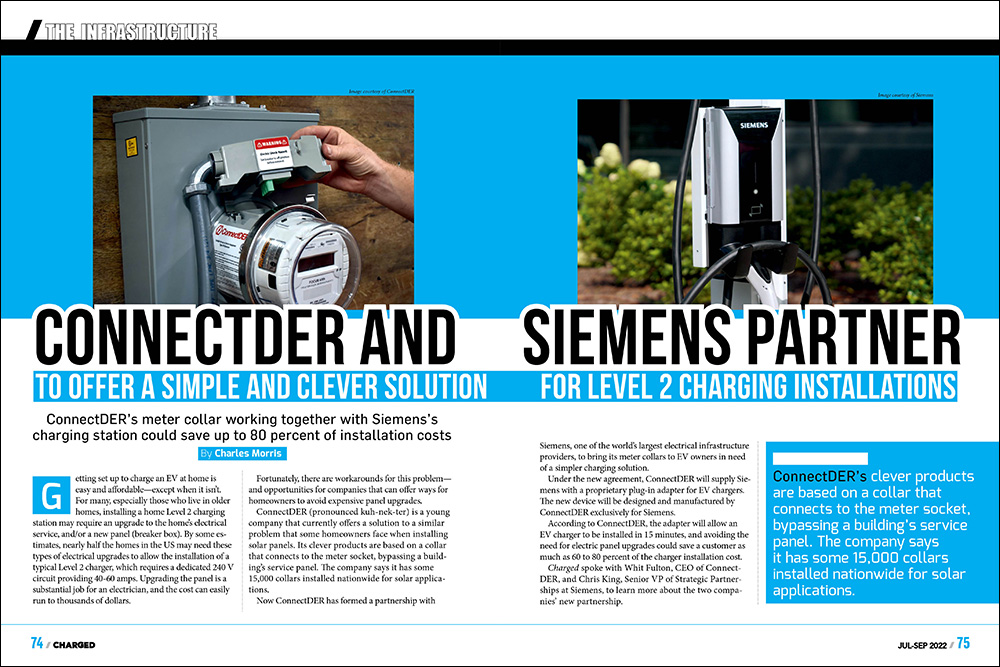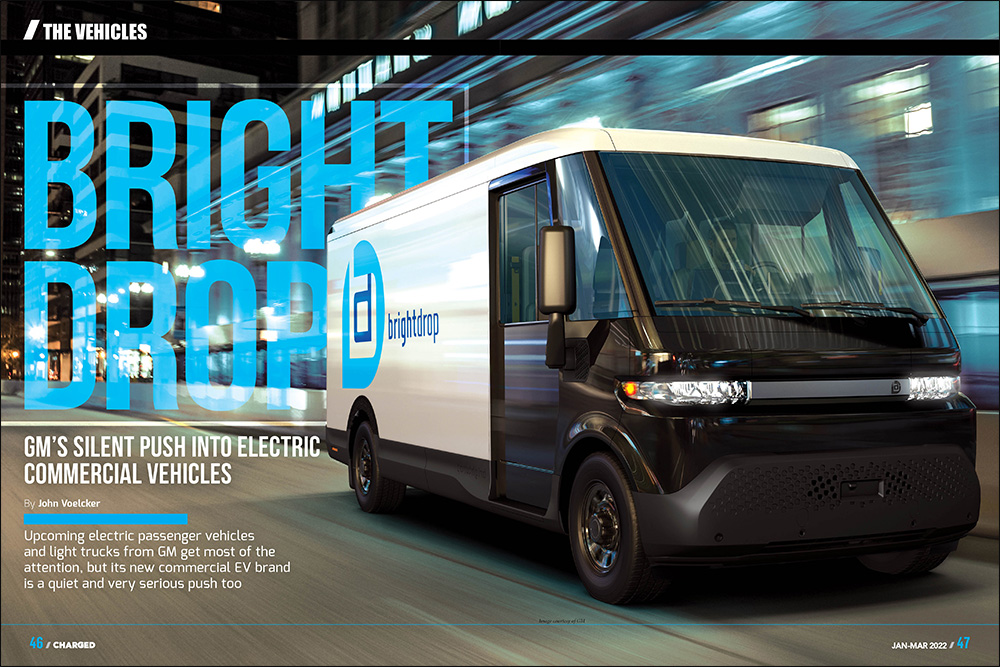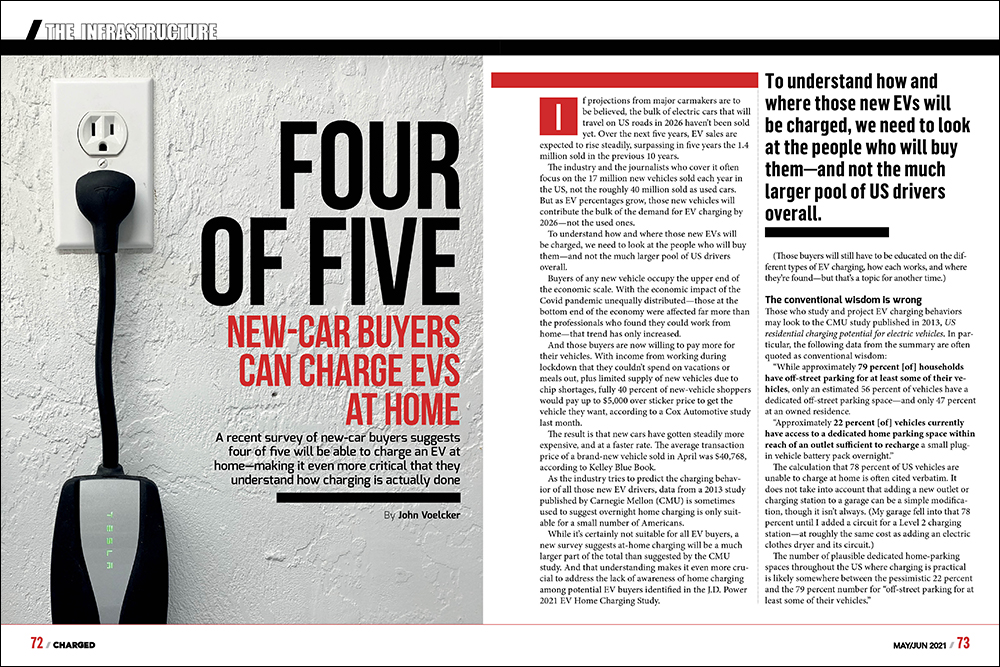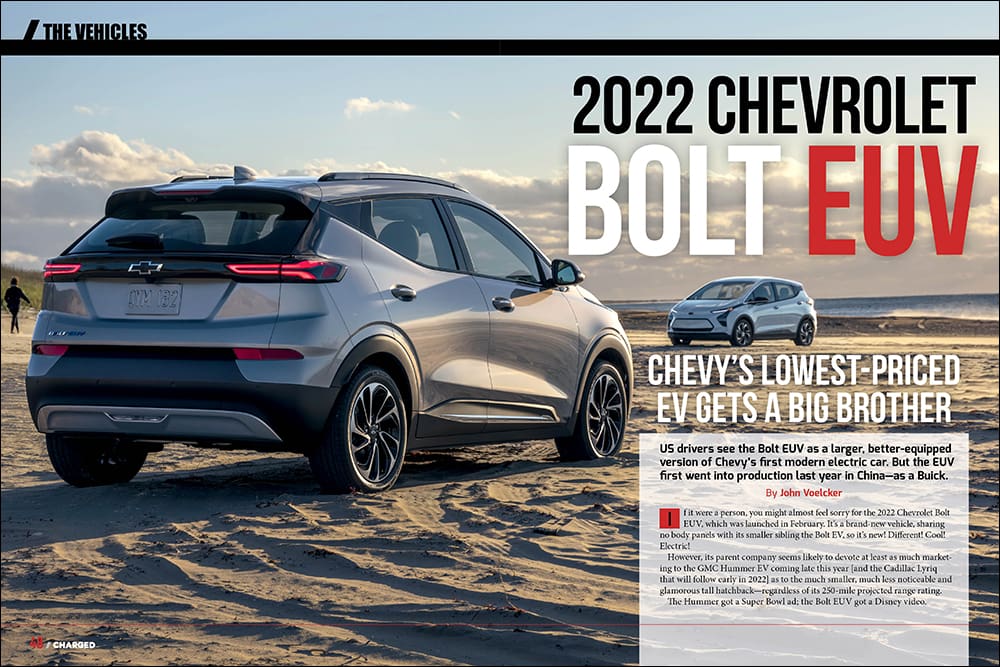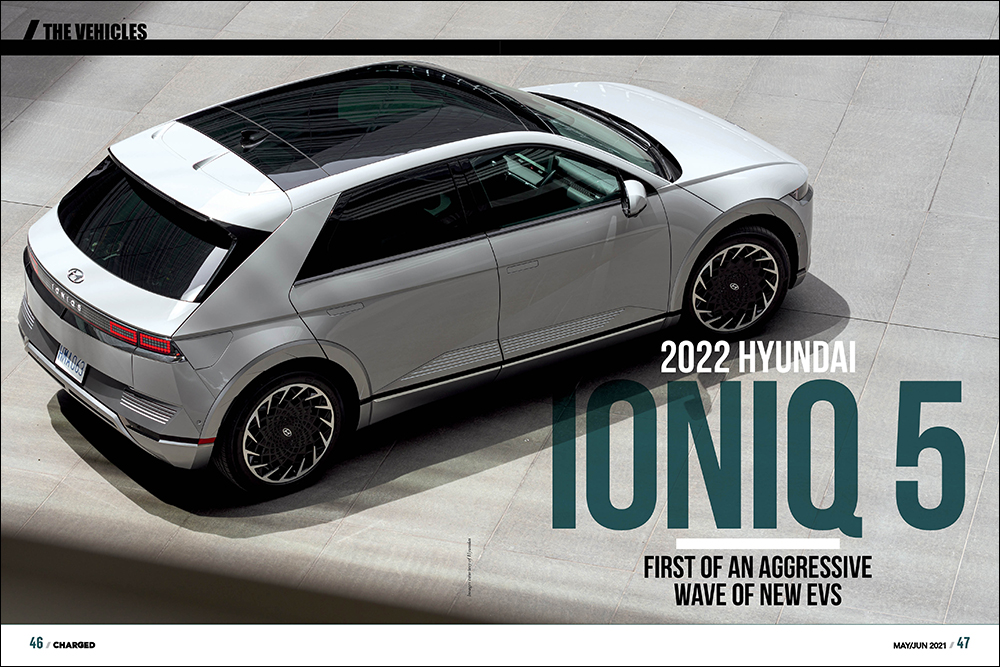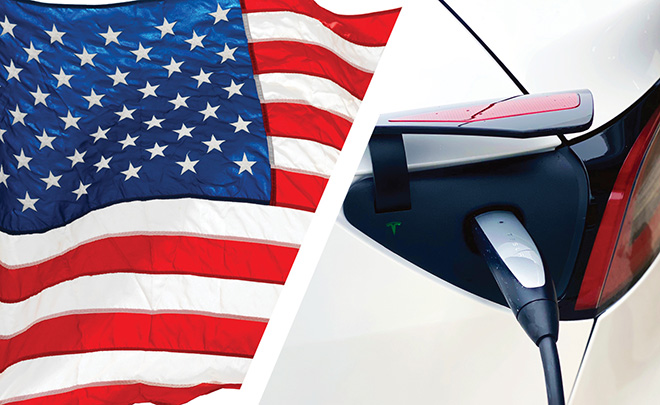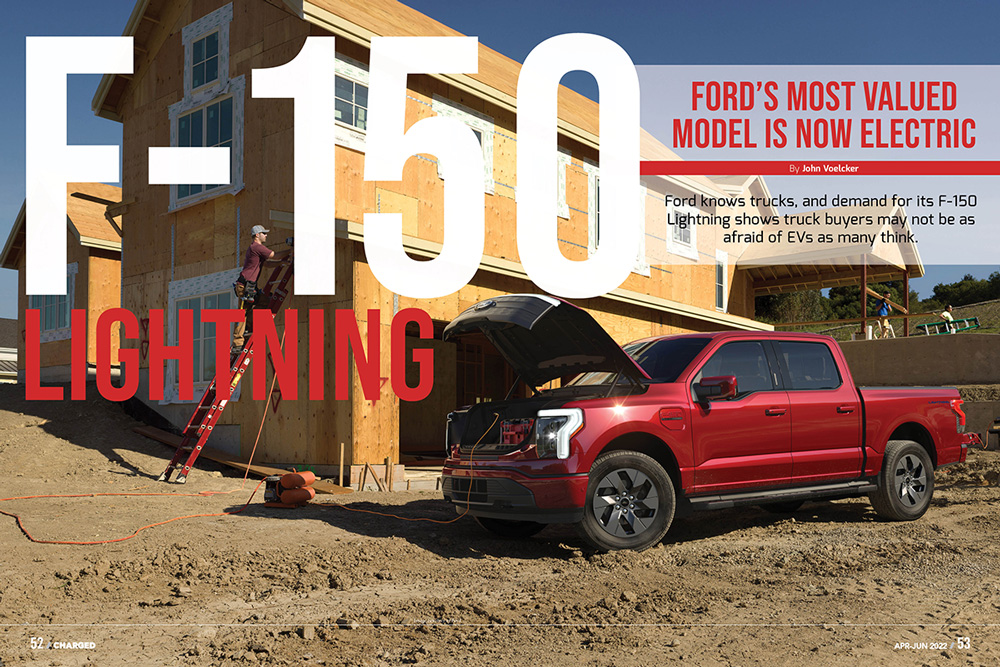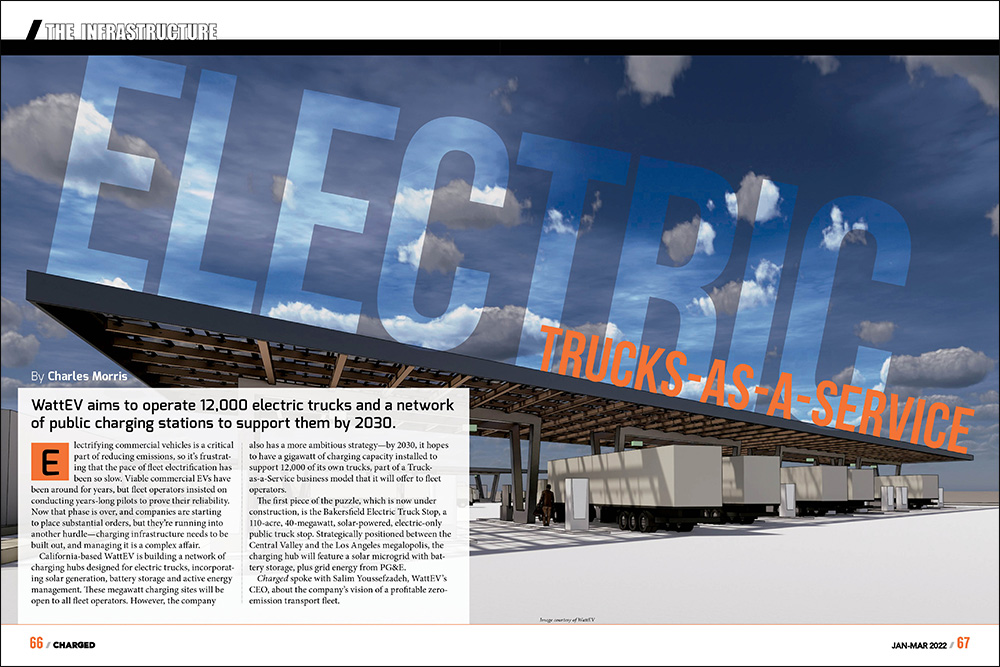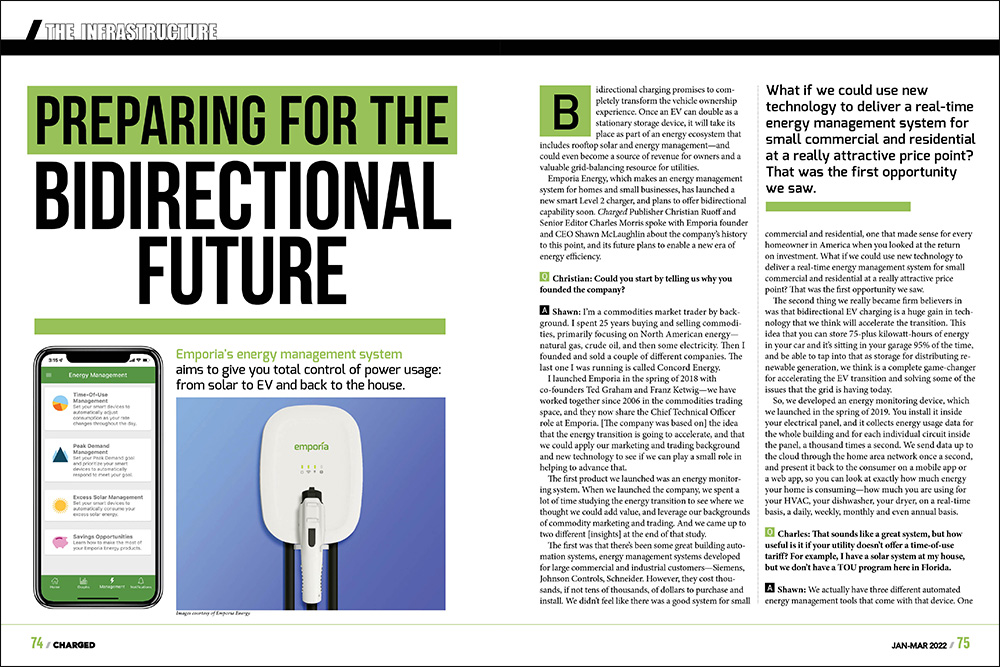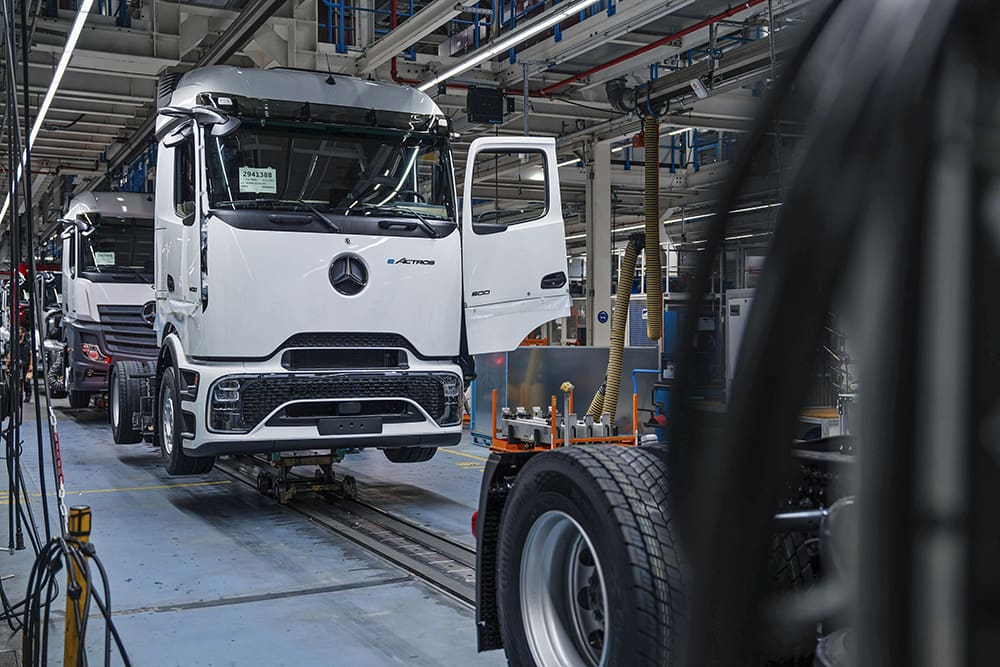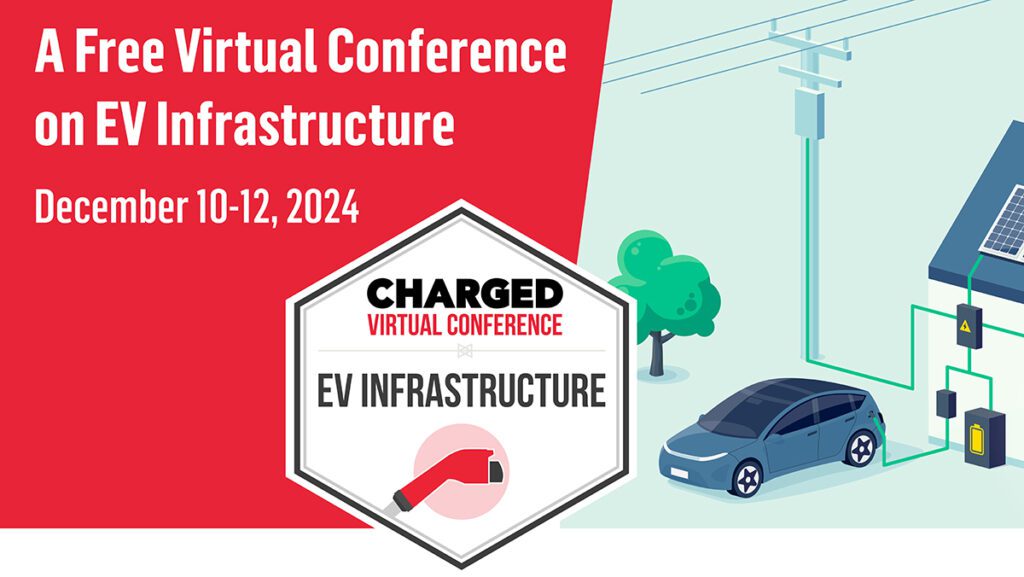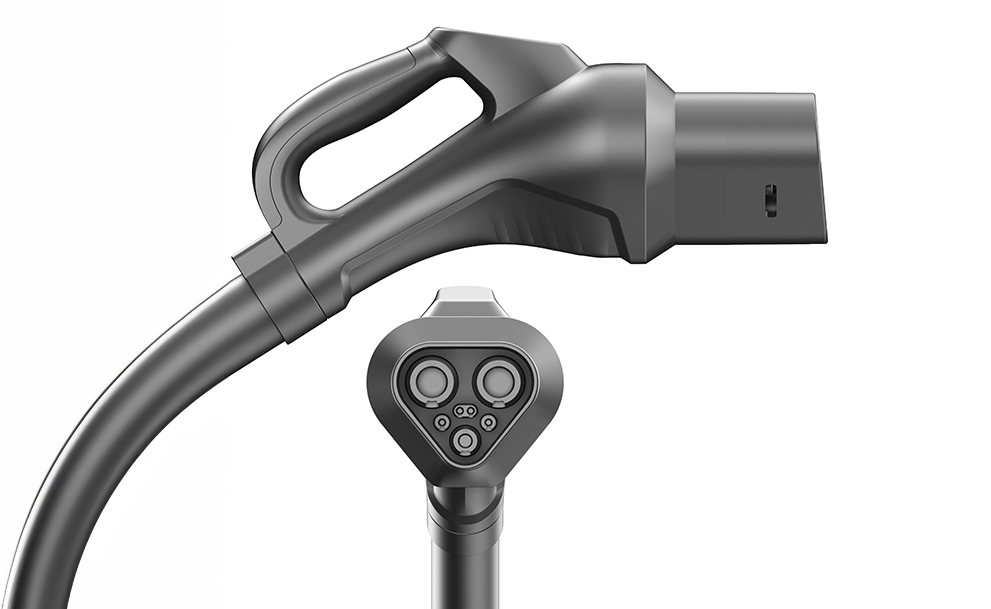- While it isn’t a standards development organization per se, CharIN works with standards bodies and firms in the EV charging industry to help refine new standards, and to test vehicles and EVSE for interoperability.
- CharIN’s North America Charging Interoperability Task Force, which currently has over 300 members, is working to help standardize Tesla’s NACS charging system (aka SAE J3400).
- CharIN is working closely with ChargeX, SAE and a range of EVSE firms to establish a set of common error codes as a tool to improve the reliability of public charging infrastructure.
- CharIN is also at the center of efforts to finalize the Megawatt Charging System, which is expected to be a game-changer for heavy-duty EV charging, and to develop standards for other up-and-coming technologies such as V2G and Plug & Charge.
Q&A with Charging Interface Initiative North America (CharIN) Executive Director Erika Myers.
To the average EV driver, charging may seem to be a mundane, even boring, matter. You plug your EV in when you get home, and when you’re ready to drive again, it’s charged. And that’s the way it should be. But there’s a lot of work going on behind the scenes to ensure that consumers have an uneventful charging experience, and it’s anything but boring.
Standards organizations have devoted tremendous amounts of effort over the course of years to develop standards that meet the needs of automakers, EVSE manufacturers and consumers. And the work doesn’t end with the publication of a standard. Real-world testing is required on an ongoing basis to ensure that every EV will work seamlessly with every charging station.
Furthermore, EV charging infrastructure is a rapidly developing field, and there are several potentially groundbreaking new technologies that are getting tantalizingly close to commercial implementation. Bidirectional charging, the Megawatt Charging System for heavy-duty EVs, the standardization of Tesla’s charging system, and new initiatives to improve the reliability of public chargers—all of these innovations will completely transform the charging scene for the better.
The Charging Interface Initiative North America (CharIN) is an organization that’s working diligently to bring all these new technologies, and more, to commercial reality. CharIN’s North America Charging Interoperability (NACI) Task Force is working to promote interoperability with NACS (or, as it’s now known, SAE J3400). CharIN also organizes an annual Testival where companies test the latest and greatest EV charging technologies. CharIN’s latest Testival and Conference, which took place in June, was attended by representatives of organizations across the charging industry, including automotive OEMs, EVSE hardware and software manufacturers, charge point operators, suppliers and integrators, as well as government and regulatory officials, business trade groups, standards bodies and research firms.
Charged spoke with Erika Myers, Executive Director of CharIN North America.
Refining and testing charging standards
Charged: CharIN is all about charging standards, but it isn’t officially a standards body. Is that an accurate description?
Erika Myers: We are not a standards development organization in the traditional sense. We are more of a trade group that helps create alignment within the EV industry, before, during and after standards development and publication. We work closely with the standards development organizations like SAE, IEC, IEEE and ISO via our members, but we are not actually developing standards in the traditional sense.
Charged: You also have a testing function. You have your Testivals and your interoperability task force.
Erika Myers: Exactly—testing is an important function of our organization. And we’re creating conformance tests as well to support the industry outside of our formal events. We have a conformance test that some labs internationally are using for CCS, and we’re in the process of extending the capabilities of that conformance testing into other areas, like ISO 15118.
“CharIN is a trade group that helps create alignment within the EV industry, before, during and after standards development and publication.”
Out with CCS, in with NACS?
Charged: Some months ago, I was surprised at how enthusiastically everybody jumped on the Tesla NACS bandwagon. CharIN was just about the only organization that was saying, “Wait a minute. Maybe we need to slow down and consider some things.” Now you are involved with testing interoperability for NACS. Has CharIN’s position on that evolved, or have your concerns been addressed?
Erika Myers: In the past year, CharIN has been supporting industry development of SAE J3400 with the launch of the NACI Task Force. Last December the Technical Information Report was published, which is the precursor to the SAE J3400 standard, and CharIN members have been actively involved with the SAE J3400 Committee. The NACI Task Force currently has over 300 individuals who are contributing to the development of SAE J3400 and establishing market alignment.
One challenge that we are trying to tackle is the safe use of adapters. CharIN has had a long-standing position that adapters are not an ideal solution for consumers, but recognizing that adapters will likely be used for some time, we want to get ahead of potential safety challenges of non-standardized adapters. So, CharIN released an adapter safety statement regarding J3400/J1772 adapters. The publication of the UL 2252 standard for adapters is expected soon.
Charged: I also found it unseemly that people were gleefully predicting the demise of CCS.
Erika Myers: CharIN predicts that there will be many years of co-existence between CCS-1 and J3400, and our plan is to continue to support both. CharIN has been working collaboratively with all of our members to ensure that SAE J3400 is standardized and meets consumer needs for reliable and interoperable charging.
“CharIN predicts that there will be many years of co-existence between CCS-1 and J3400, and our plan is to continue to support both.”
Charged: That leads into my next question. I happen to think that the Superchargers aren’t more reliable because they use a different connector, but because there’s one company making the cars and the chargers, and running the network, and that’s no longer the case, now that other automakers and other charging networks are getting involved. Is this transition going to result in better reliability, or are there some challenges there?
Erika Myers: Interoperability is, of course, a big part of what CharIN focuses on, which is why we introduced SAE J3400 for the first time at our 2023 Testival and again at our June 2024 Testival. Multiple manufacturers have tested their pre-production SAE J3400 equipment, and testers were pleased with the results.
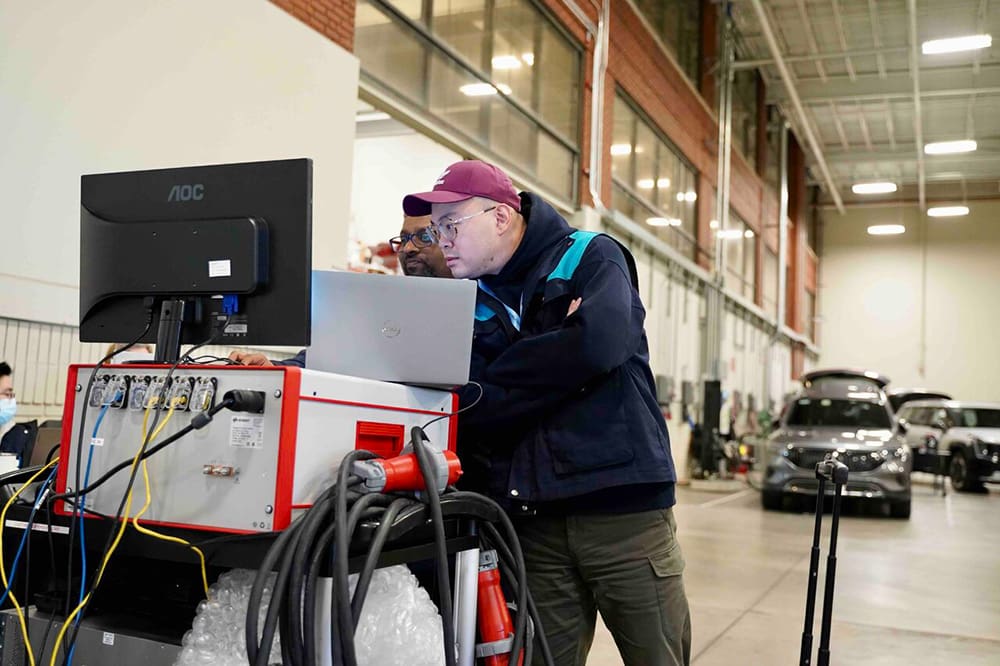

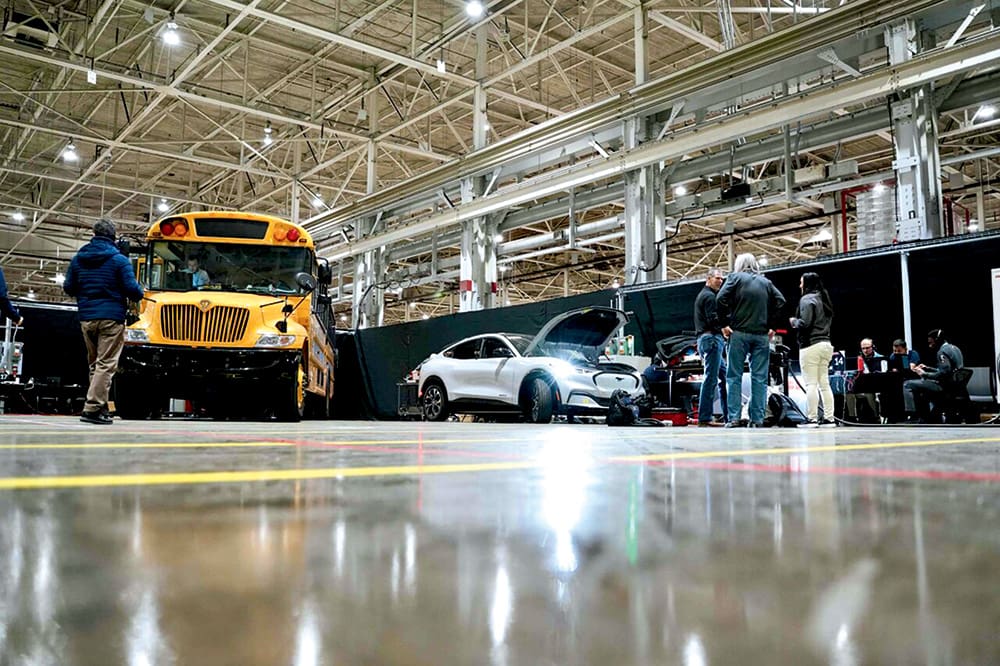
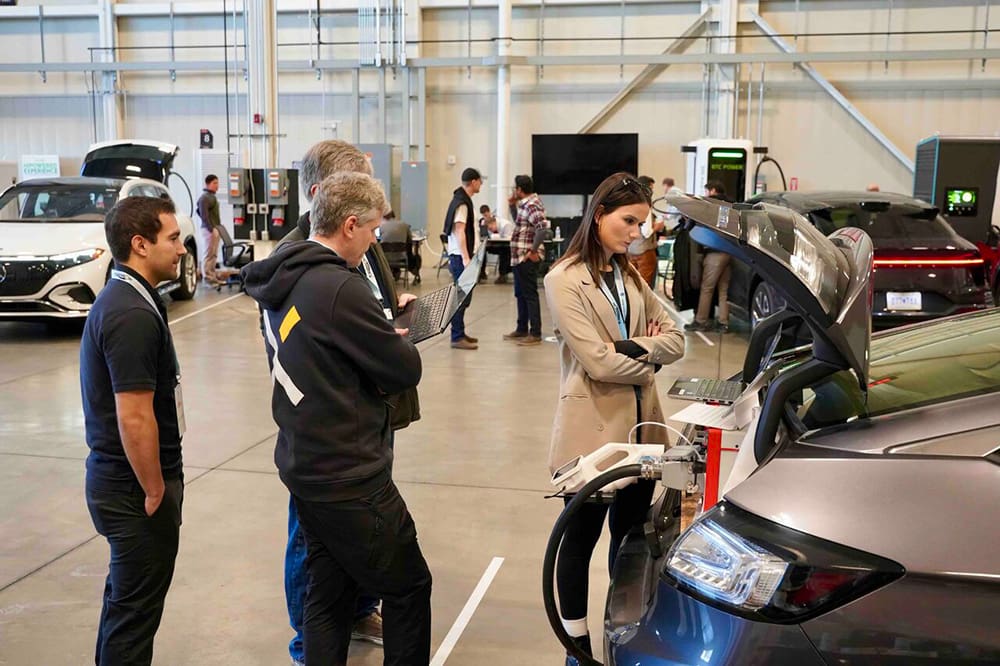

CharIN’s Testival Event
The obligatory question about charger reliability
Charged: I ask everybody this question, and I get a lot of different answers. Why is it so hard to keep those doggone public chargers working?
Erika Myers: CharIN works diligently with the industry to fix problems related to interoperability and standards conformance. CharIN’s goal is to make sure that every vehicle works with every charger.
CharIN is a member of ChargeX [the National Charging Experience Consortium, a collaboration among DOE national labs, EV charging industry players and consumer advocates], which recently published common error codes research. Industry efforts to implement things like common error codes will make it easier to address and quickly fix problems in field, ideally remotely, so you don’t have to do a truck roll.
Perfecting the Megawatt Charging System
Charged: Tell me some more about MCS, the Megawatt Charging System.
Erika Myers: CharIN’s MCS Task Force initially defined the specification to support the next generation of on- and off-road DC fast charging up to 4.5 MW. CharIN members continue to support the MCS standardization activities through three parallel standardization processes.
We saw many demo models of MCS vehicles and chargers at the 2024 ACT Expo in May—especially among Class 7 and 8 trucks and charging depots servicing these vehicles. For example, Terawatt and WattEV, two CharIN members, have announced plans to incorporate MCS into their charging hubs once the standards are finalized.
We are also excited about off-road industry interest in MCS applications, including for the marine industry. We have hosted a series of workshops in Long Beach, California and Amsterdam, as well as virtual workshops to continue to raise awareness of MCS in the marine industry. We have upcoming workshops in September and November.
Everybody’s going bi
Charged: Is bidirectional charging supported through CCS, MCS, or both?
Erika Myers: CCS, through ISO 15118-20, is capable of providing bidirectional capabilities for charging equipment. There are still some technical details that need to be figured out, like integrating grid codes, but the CharIN community is interested and invested in solving some of those challenges.
Charged: What are your thoughts on V2G applications in general? Is that a game-changer, niche application, neither, or both?
Erika Myers: CharIN absolutely thinks there’s some opportunity for vehicle-to-grid integration. We have had a grid integration focus group for many years that’s addressing what might be needed in the standard.
Combining green energy with green mobility is part of CharIN’s mission and our vision, so we absolutely are invested in making sure that the electrons used by our EVs are as clean as possible, and the best way to do that is to marry it with renewable energy generation, and allow vehicles to become an alternative to stationary storage.
If we could leverage the battery that’s already in the vehicle, then that’s potentially making the vehicle a more cost-effective grid asset, because it’s already used for other purposes and therefore may be able to do the same things for less. Also, it could be used by consumers as a way to help reduce the timeline for paying off the car to actually become—especially in the case of fleets—a revenue source as opposed to a cost center. We think these are great opportunities for a win-win, both for the consumer and the energy industry.
“Combining green energy with green mobility is part of CharIN’s mission, so we are invested in making sure that the electrons used by our EVs are as clean as possible, and the best way to do that is to allow vehicles to become an alternative to stationary storage.”
Charged: Are you starting to see any commercial projects with V2G, or is everything still in the pilot stage at this point?
Erika Myers: As highlighted at CharIN North America’s 2024 conference, we’re seeing commercial-scale V2G deployments happening in Europe already, but we’re still in the demonstration phase for projects here in North America. I think there’s more opportunity with electric school buses, so that’s something that we’re watching closely. A lot of utilities have started to introduce more electric school bus programs, and almost all the electric school buses today are bidirectionally capable, and are offering that as an option to their customers. The World Resources Institute has an electric school bus initiative, and significant research is being devoted to vehicle integration, using school buses as a resiliency tool for local communities [for disaster relief, etc.].
Utilities, EVs and the grid
Charged: What else can you tell us about new initiatives on the utility front?
Erika Myers: I worked for many years with electric utilities on topics related to time-of-use rates, demand charge management, managed charging, all forms of vehicle-to-grid integration, and also distribution planning for EVs, so a lot of my background is on the utility side of things.
It’s exciting to see electric utilities exploring different opportunities with demand response and demand-side management programs for EVs, and I’ve been paying close attention to what the Peak Load Management Alliance has been doing. PLMA hosted their first managed charging conference last fall, and that, to me, is a big signal that utilities are making major investments and prioritizing this as an opportunity. Managed charging is a great precursor to more advanced versions of vehicle-to-grid integration, and being able to manage at the customer site requires quite a bit of communications and aggregation that CharIN is here to support.
Charged: There are so many utilities in the US, and some seem to be really hip to vehicle electrification, while others are behind the curve.
Erika Myers: Much of that perception has to do with where the EVs are distributed. There are 3,300 electric utilities in the United States, and EVs aren’t being sold uniformly across the country. We know that a lot of utilities are very interested in how EV sales will evolve within their consumer base, because obviously they have to get ahead of these deployments to manage power demand.
Even at a local level, we’re starting to see utilities making statements that they’re concerned about the number of pole-mounted transformers that they must replace, as certain neighborhoods have higher EV penetration. These are unexpected costs, and there are long lead times in purchasing transformers and substation equipment due to high industry demand.
Charged: What do I say to somebody that says, “EVs are going to crash the grid—there’s not enough power?”
Erika Myers: I would point to all the studies done by the Electric Power Research Institute and the Edison Electric Institute, that have shown the opposite, and that there is ample generation available. Electric utilities have consistently met the demands of customers over their 100-plus-year history. I think where we have some challenges is not just generation—it’s making sure that it’s clean generation, so when we deploy a cleaner technology, it’s being fueled by other cleaner technologies.
This is where it gets challenging from a utility perspective—you have to align those charging times with peak solar or peak wind, and maybe get the consumer to modify charging behavior accordingly. I’m part of a managed charging program with my local utility, Dominion Energy, and they give me $40 a year to modulate my charging times. I have a smart charger that can be accessed by my utility, and they can potentially turn off a charge during a peak event or align charging with peak solar or peak wind. I don’t notice any disruptions in charging, and I get paid.
“There is ample generation available to charge EVs. Electric utilities have consistently met the demands of customers over their 100-plus-year history.”
Charged: That sounds like an argument for having a smart charger instead of just a plain old non-networked charger.
Erika Myers: I think this is a great example of how the automotive industry and electric utilities could partner well together, because a lot of automakers will sell a particular charger along with the car at the point of sale, and if they were able to work with the electric utility to introduce a smart version of that charger, then it could get automatically enrolled into these kinds of programs that benefit the consumer.
We’re also starting to see some automakers address this within their own apps. If you type in your zip code, they’ll connect you automatically to a time-of-use program so you can save even more money on your utility bill. There are really creative opportunities that organizations, like CharIN, can support through communication protocols like ISO 15118. Both 15118-2 and 15118-20 offer smart charging capabilities and another way to build consumer-friendly features into the next generation of electric vehicles.
This article first appeared in Issue 68: April-June 2024 – Subscribe now.

